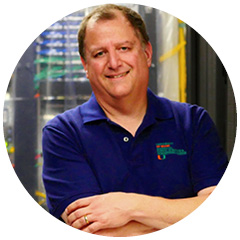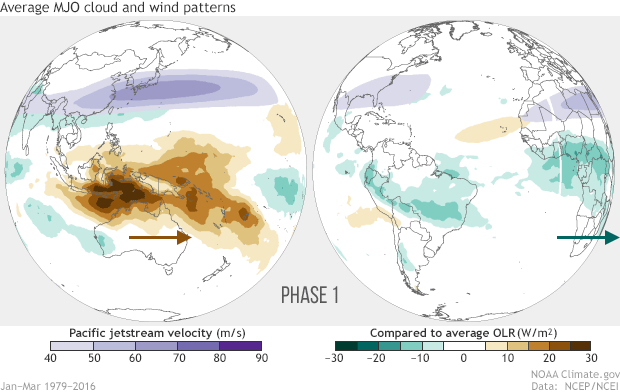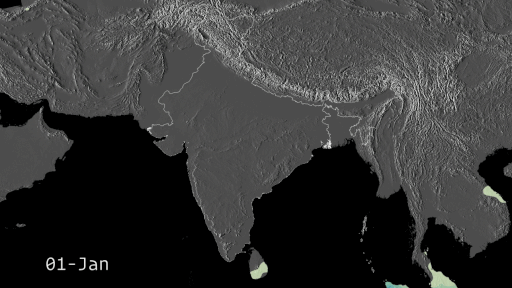For forty years, climate scientists have been trying to develop a computational model that accurately predicts the El Niño–Southern Oscillation (ENSO) phenomenon. But that work has stagnated in recent years with only minor, gradual improvements to their predictions.
 “The question is why? What are we not understanding?” said Ben Kirtman, the Deputy Director of the University of Miami’s Institute for Data Science and Computing (IDSC), head of the IDSC Earth Systems program, and Director of the Rosenstiel School of Marine and Atmospheric Science’s Cooperative Institute for Marine and Atmospheric Sciences (CIMAS).
“The question is why? What are we not understanding?” said Ben Kirtman, the Deputy Director of the University of Miami’s Institute for Data Science and Computing (IDSC), head of the IDSC Earth Systems program, and Director of the Rosenstiel School of Marine and Atmospheric Science’s Cooperative Institute for Marine and Atmospheric Sciences (CIMAS).
Kirtman is now leading a multi-institutional group to try to answer those questions. They submitted a four-year proposal to the National Science Foundation (NSF) that, if approved, would allow Kirtman and his team to test new algorithms designed to better understand the oceanic and atmospheric phenomena that drive El Niño, and would use that information to test new forecasting models as well. Any improvements to the current-day understanding of El Niño would have profound implications since El Niño influences rainfall and temperature patterns throughout the United States, Mexico, and other countries bordering the Pacific Ocean.
For Kirtman, the key to unlocking the secrets of El Niño starts underwater. He wants to get a better grasp on what’s happening below the surface of the western Pacific Ocean, the driving force behind El Niño. To do so, his team would employ a vast constellation of NOAA satellites that measure the height of the sea surface, buoys that record the temperature of the water below the surface, and drones that track the shifting currents. Then comes the hard part.
“The real tricky part is we know it’s not just what’s going on below the surface, but noisiness that happens in the atmosphere,” he said.
Kirtman said that “noise” has been driving the scientific community mad in recent years. No matter how confident they are in their computer models designed to predict El Niño, those atmospheric disturbances continuously muddle their results. That’s why Kirtman’s proposal will closely examine two atmospheric phenomena that he thinks are to blame.
The first is the Madden-Julian oscillation, a large-scale weather pattern that moves quickly from the Indian Ocean east over the Pacific. The second is the Indian monsoon, a period of torrential storms that regularly bombards India and its surrounding waters each summer. Combined, Kirtman said those phenomena consistently cripple their results. “It’s a shock to the system,” he said. “The predictability technology we’re developing will give us a way to remove that shock.”


 To form his team, Kirtman first turned to a former student whose Ph.D. he supervised at UM: Sarah Larson, now an assistant professor and climate scientist at North Carolina State University. But he’s also looking to recruit interns from underrepresented groups. Kirtman intends to target students from Miami Dade College and the American Indian Higher Education Consortium (AIHEC), a network of 37 Tribal colleges and universities (TCU’s) in the U.S. But Kirtman doesn’t cite moral reasons for that decision—he explains it by pointing back to science.
To form his team, Kirtman first turned to a former student whose Ph.D. he supervised at UM: Sarah Larson, now an assistant professor and climate scientist at North Carolina State University. But he’s also looking to recruit interns from underrepresented groups. Kirtman intends to target students from Miami Dade College and the American Indian Higher Education Consortium (AIHEC), a network of 37 Tribal colleges and universities (TCU’s) in the U.S. But Kirtman doesn’t cite moral reasons for that decision—he explains it by pointing back to science.
“For me it’s a very quantitative thing. Diversity of models, diversity of ideas, improves the forecast, improves your product,” he said. “Everything I’ve done in the last 20 years tells me diversity makes things better, so I want to tap into that as best I can.”
As part of Kirtman’s proposal, he would publicly release the data on an ongoing basis throughout the four-year study. He acknowledges that he runs the risk of other scientists using his data to do a quick analysis and beating him to publication, but much like scientists have been cranking out research based on images and data released by NASA from its James Webb Space Telescope, Kirtman feels the overall benefit to science trumps being first to publish.
“It’s a balance, it’s a challenge, but I always err on the side of just sharing everything,” he said. “It grows the science of what we’re working on, it creates a community. That’s something I really like to do.”
Tags: Ben Kirtman, el Niño, ENSO, Indian Monsoon, James Webb Space Telescope, La Niña, Madden-Julian Oscillation, NSF, Sarah Larson


